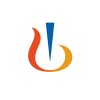
Clinical Evaluation of Safety and Efficacy of Radio Frequency (Forma Eye) Treatment for Dry Eye...
Improvement of Dry Eye DiseaseThe aim of the study is to evaluate the safety and efficacy of radiofrequency treatment for dry eye disease due to meibomian gland dysfunction

Safety and Efficacy of BRM421 for Dry Eye Syndrome Treatment
Dry Eye SyndromeThe objective of this study is to compare the safety and efficacy of BRM421 Ophthalmic Solution to placebo for the treatment of the signs and symptoms of dry eye.

A Study to Assess the Safety and Efficacy of ECF843 vs Vehicle in Subjects With Dry Eye Disease...
Dry EyeThe study was planned to be conducted in 2 parts: Part 1 to determine the efficacy and safety of ECF843 vs vehicle, followed by Part 2 with additional exploratory assessments of ECF843 vs Vehicle. Both parts of the study included a double-masked study design, with randomization stratified for subjects with Sjogren's Syndrome.

HU007 Eye Drops in Patients With Dry Eye Syndrome
Dry Eye SyndromesThis study is a multicenter, randomized, double blind, Restasis-controlled non-inferiority, Phase III Study to evaluate the efficacy and safety of HU007 eye drops in patients With dry eye syndrome

Study to Evaluate the Safety, Tolerability, and Efficacy of OTX-CSI in Subjects With Dry Eye Disease....
Dry Eye DiseaseTo assess the safety, tolerability and efficacy of a single dose of OTX-CSI, a sustained release cyclosporine drug product, in subjects with dry eye disease.

The RENEW Trial: A Multi-Center, Randomized, Double-Masked, Parallel-Group, Vehicle-Controlled,...
Dry EyeThe RENEW Trial is a Multi-Center, Randomized, Double-Masked, Parallel-Group, Vehicle-Controlled, Adaptive Phase 3 Clinical Trial to Assess the Safety and Efficacy of Reproxalap 0.25% Ophthalmic Solution Compared to Vehicle in Subjects with Dry Eye Disease

Study to Evaluate the Safety and Efficacy of SDP-4 in Subjects With Dry Eye Disease (DED)
Dry EyeSDP-4-CS201, is a Phase 2, multi-center, double-masked, randomized, vehicle-controlled, dose-response, parallel-group study designed to evaluate the ocular and systemic safety and efficacy of SDP-4 ophthalmic solution in subjects with moderate to severe dry eye disease over a 12-week treatment period. Three concentrations (0.1%, 1.0% and 3.0%) of SDP-4 ophthalmic solution will be given to parallel groups via topical ocular instillation BID.

Comparison Between iLux and LipiFlow in the Treatment of Meibomian Gland Dysfunction (MGD): A 12-month,...
Meibomian Gland DysfunctionEvaporative Dry Eye DiseaseThe purpose of this post-approval study is to demonstrate that iLux treatment offers comparable treatment effectiveness to LipiFlow for MGD treatment at 12 months post single treatment.

The Comparison of 50% AS Versus PFAT+ 0.05 % COE in Severe Dry Eye Syndrome
Dry Eye SyndromeThe present study aimed to evaluate and compare the efficacy of a 1 month clinical trial of 50% AS for the treatment of severe dry eye syndrom (DES) based on Schirmer's Test, tear break-up time (TBUT), fluorescein staining, and ocular surface disease index (OSDI) scores, as compared to conventional preservative-free artificial tears (PFAT) plus 0.05% COE treatment in patients with severe DES

Intense Pulse Light Treatment With Meibomian Gland Expression of the Upper Eyelids in Dry Eye Disease...
Dry EyeUpper eyelid treatment has not been used with previously described methods of treatment of dry eye disease using intense pulsed light therapy because the upper lids disease was typically not as advanced as lower lid and because direct treatment of the upper lid was not felt to be necessary as each light pulse extended over the entire periorbita even when concentrated on the lower lid.
